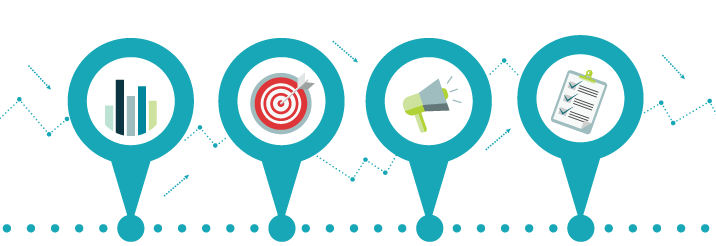A strong B2B website does a lot of things: builds credibility, acts as the digital face of a brand, communicates a firm’s value propositions, educates potential clients, and engages current clients. It should also be a lead generation tool (often this is the most important role of a website). Whether your website is brand-new or has been around for a couple of years, it’s a good practice to evaluate its lead generation capabilities.
How do you determine if your website is generating leads or duds? We have seven questions you can answer to determine whether your B2B website is doing its job to produce quality leads.
What is the volume of leads?
Let’s start with the volume of leads. How many leads are you getting on a daily, weekly, or monthly basis? For many B2B firms, the average size of a client deal is upwards of $25,000 and continues on for years. Due to this higher price tag, many B2B websites are considered successful if they drive 3 – 5 leads a month. However, if the average size of each client deal for your firm is under $1,000, you will likely want closer to 30+ leads a month from the website to hand off to sales.
It’s important to determine a realistic number of leads you want your website to generate each month so you can assess whether adjustments should be made to reach your goal.
Do the leads fall into your target market?
The next question takes a look at who is completing the forms on your website. Are the forms being completed by companies that fall into your target market? Or are the companies too small, too big, in the wrong industry, not in the ballpark for budget? While not every lead submitted is your absolute ideal client, the majority of leads should be companies that fall into your ideal client persona.
Are there enough CTAs?
When a website isn’t generating quality leads or any leads at all, we first take a look at the calls-to-action (CTAs) on the website. Are the CTAs clearly visible? The placement of CTAs on the website should be near the top of the website and should appear regularly throughout the web pages. If the only CTA on your website is a Contact Us page that appears in the sub-navigation, your B2B website is going to need more CTAs added.
Are the CTAs compelling?
Next, it’s important to look at the messaging of the CTAs. Do they compel a visitor to complete the desired action? Do they offer the potential client something they want?
Here are examples of poor CTAs:
- Please get in touch with our team.
- Learn about our services.
- Get pricing.
Here are examples of compelling CTAs:
- Get your custom quote today.
- Talk to our solutions experts.
- Download your free guide.
- Live chat with our team.
Do the forms require too much information?
After evaluating the CTAs, it’s time to look at the forms themselves. What type of information are they trying to collect? It’s a good idea to review the form and evaluate what information is essential. Name and email are typically the most essential information, although phone number can be essential in certain cases. Eliminate any fields that aren’t valuable for qualifying the lead or that can be gathered later on in the sales cycle.
Also, if you are getting terrible, unqualified leads, the form can be a good place to include qualifiers. For example, if your software firm only works with firms of a certain size (based typically on budget and organization needs), you can include a form field that asks for the size of the firm or the number of people employed by the firm.
Stay away from long forms that require a lot of time to complete or need information that the decision maker may not have at their fingertips – especially if it isn’t essential to the initial lead qualification.
Have you implemented anti-spam tactics?
It’s not unusual for websites to get spam submissions. However, if you feel you are getting a lot of spam or have seen a spike in spam recently, you can roll out anti-spam tools on the form page. CAPTCHA is the best way to block computer generated spam from mixing with your real, quality leads. CAPTCHA stands for Completely Automated Public Turing Test to Tell Computers and Humans Apart. While it’s not flawless and you may still get some spam or sales pitches via your forms, it’s still the best way to deter spam submissions.
Do you need another CTA or form to divert non-sales leads?
Are you finding that you are getting a lot of form submissions that are legitimate but aren’t potential clients? For example, we’ve had clients who received a number of job applicants filling out forms that were intended to collect potential client leads. In this case, and in a variety of other cases, it is a good idea to create a CTA and form for job applicants to complete. Doing this is a two-fold win: first, you divert non-sales leads to another form that can be handled by someone outside of sales and marketing, and second, you can test whether the applicant follows directions.
Wrap-up
While this isn’t an exhaustive list of how to evaluate the success of your website’s lead generation, it’s a great start. It’s critical to evaluate your B2B website’s lead generation at regular intervals to ensure you are getting the most out of your website.
Interested in a personalized evaluation of your B2B website? Contact us to today to schedule your evaluation with a lead generation expert.



